COVID-19: What Can We Do Now That Is Productive?
Another day in self-isolation and signs are that this is not going to end soon so here are some thoughts on what we can do that is constructive as entrepreneurs? (As just humans, we should do all the other things to flatten the curve like social distancing, washing hands, etc.). Here are some thoughts for today:
- From the Boston Globe by Scott Kirsner, a survey of companies that are providing important services during this period, and probably after as we will be changed forever even when things
go back to “normal”—“Coronavirus means opportunity for some companies” read full article.
- An excellent slide deck from old friend Fotis Filippopoulos from Ogilvy that give great advice on how to think about things right now, “ Making Brands Matter in Turbulent Times and Beyond COVID-19” (view full slide deck).

- Post from Paul Graham of YC on making a positive out of being stuck at home for students:

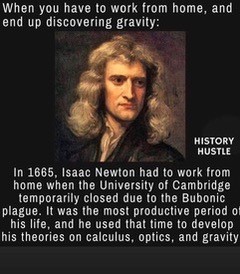
Hope all if this gives you positive energy to be productive when your community, society and the world need it most. Stay strong my friends and seek to be antifragile as hard as that can be right now.
The author
Bill Aulet
A longtime successful entrepreneur, Bill is the Managing Director of the Martin Trust Center for MIT Entrepreneurship and Professor of the Practice at the MIT Sloan School of Management. He is changing the way entrepreneurship is understood, taught, and practiced around the world.

The Disciplined Entrepreneurship Toolbox
Stay ahead by using the 24 steps together with your team, mentors, and investors.
The books
This methodology with 24 steps and 15 tactics was created at MIT to help you translate your technology or idea into innovative new products. The books were designed for first-time and repeat entrepreneurs so that they can build great ventures.
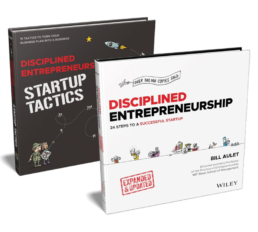
What Gives Me Confidence That We Are Successfully Teaching Entrepreneurship
Sign up for our newsletter
The Disciplined Entrepreneurship Toolbox
Stay ahead by using the 24 steps together with your team, mentors, and investors.
One of the great challenges for me as an entrepreneurship educator is knowing whether the material I am teaching works — that my students get value out of the curriculum and that they are more successful entrepreneurs as a result. I know that the methods I teach helped me go from losing money in my first venture to exiting my third venture after it had increased in value by a half a billion dollars, but that is just one data point. I believe in what I teach, but how do I know it works for others? How do I answer the logical and appropriate challenge of “prove it?”
This question has been in the back of my mind since I started teaching over ten years ago. In that time, several systematic analyses of the programs we’ve run have given me the confidence to say “I know it works.” It will be impossible to unequivocally prove scientifically that they work because we will never have a perfect control set to measure against – it would be unethical to deprive a random subset of students of entrepreneurship educational opportunities – but the three data points I present here do as good a job as possible at evaluating the programs’ impact. I should also say that as an educator, I deeply believe that the measurement of our success should be more than economic impact from new companies because I believe that entrepreneurship is about more than startups. All of this considered, while incomplete, the success of new companies is the metric most often used in these analyses. New company formation is the one clear metric that seems to validate these programs in the eyes of the public. It is also the one we can currently best quantify.
The first data point validates what I see firsthand on a daily basis at MIT’s entrepreneurship center working with students inside and outside of the classroom. In late 2017, we hired a highly talented outside researcher, Tory Lee, to study how successful our delta v graduates were. “delta v” is our fully immersive 3-month program that provides the space, structure and support to launch a new venture. The structure of the delta v program is based off the Disciplined Entrepreneurship approach. I believed the approach and methodology were positively impacting students because I saw our students make great advancements during and after the program, but I wanted to see data to verify this belief.
Our study got us that data in spades and it certainly positively surprised all of us. Of the 76 teams surveyed (a statistically meaningful number), a stunning 75% of the companies were either still in business or had been acquired. At the time the study was completed, January 2018, these teams had raised over $150M (this number is now well over $200M). So on average, each company raised $2M, with the median being $300K. This exceeded the range of our most optimistic projections.
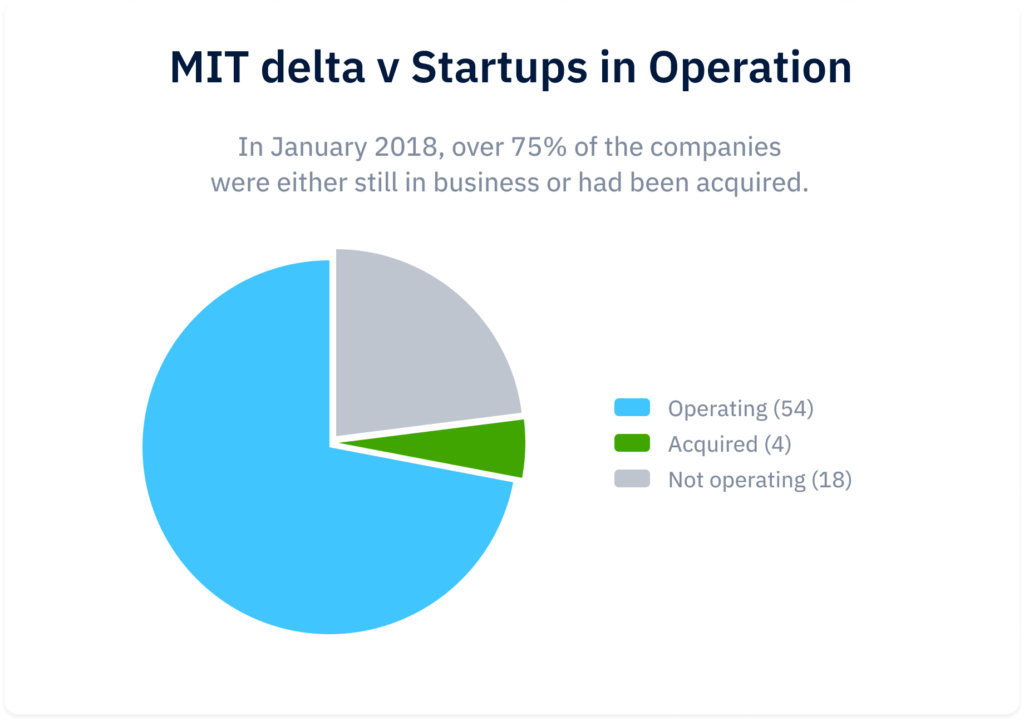
The second data point is a study done by Highlands and Islands Enterprise (HIE), part of the Scottish government, to understand if they made a worthwhile investment in training their entrepreneurs at MIT using the Disciplined Entrepreneurship frameworks. HIE made a long-term commitment to entrepreneurship skills development in a comprehensive program called the Entrepreneurship Support Programme (ESP). At the core of this program were two key elements based off Disciplined Entrepreneurship. The first was a series of two-day master classes, but the even more substantial commitment was sending a dozen or so entrepreneurs every year to the MIT Entrepreneurship Development Program (EDP). EDP is an intense one-week program that uses Disciplined Entrepreneurship as its core methodology.
Since HIE was using public funds, they had to be extremely diligent in proving the money was being used effectively. As such, HIE undertook two external, rigorous assessments of the value-for-money of all their entrepreneurship investments. In 2012, Cambridge Economic Associates assessed that EDP was providing a return on investment (ROI) in excess of £8 back into the Scottish economy for every £1 spent. This was based on what entrepreneurs from Scotland subsequently went on to do, in terms of creating jobs and building wealth, and whether they attributed their actions to their learnings from EDP. In 2015, HIE externally commissioned a second economic impact assessment. This assessment indicated a potential future ROI of up to £28 for every £1 spent, which indicates an improvement in the relevance and effectiveness of the course content from the increasingly refined Disciplined Entrepreneurship approach. A 28 times return on investment is an extremely positive outcome by any measurement.
The third and most recent data point came from the “Way to Scale” program, which is part of the Catalyst Organization in Belfast, Northern Ireland run by John Knapton. A core part of this program is the previously mentioned one-week full-immersion Entrepreneurship Development Program (EDP) at MIT. I saw the transformation of these entrepreneurs as they became more systematic in how they approached entrepreneurship, and resultantly more confident, but it was hard to quantify the impact. Fortunately, John and his team went back a year later and did just that. Again, the results were extremely positive. For the nine CEOs in the program, their annual revenue for 2019, the year before their new plans and execution resulting from their EDP training, was £4.2M. The projected revenue for 2020, resulting from applying what they learned in the program, is conservatively forecasted to be £24.6M. Since the analysis, the CEOs now believe that the 2020 revenue numbers will be even higher. Exports, jobs and profitability also took big steps forward, as you can see in the chart below.
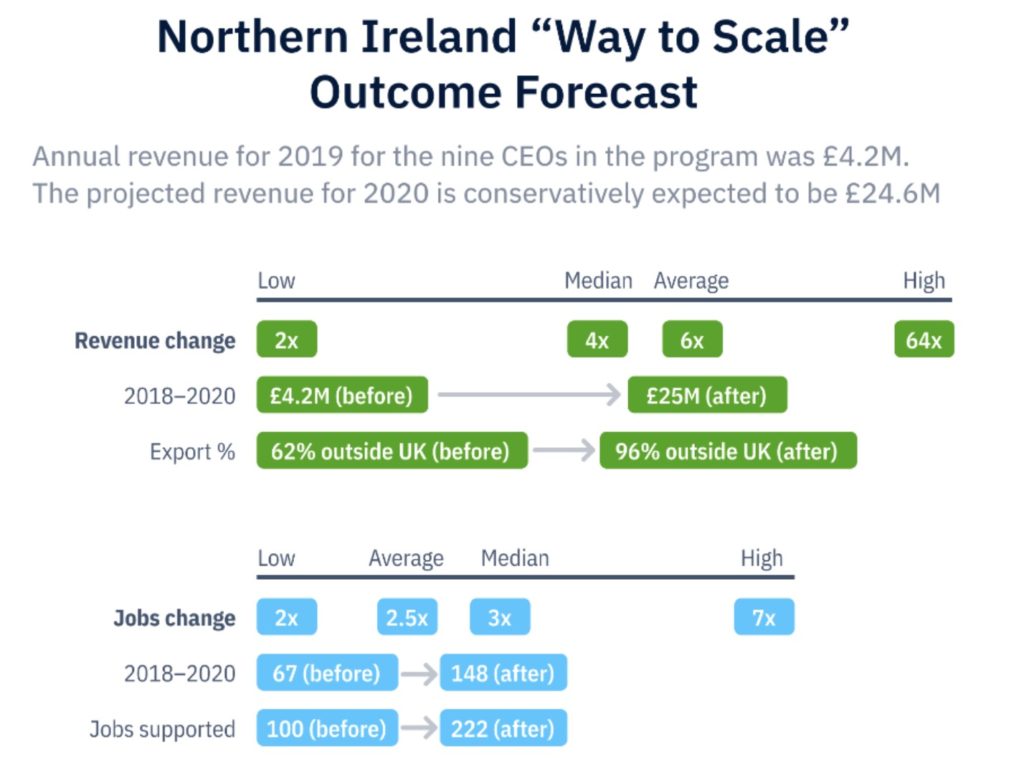
So what is the conclusion to be drawn from these three analyses? They do have their caveats. First, as previously mentioned, there is no control set to compare them to, so they do not strictly meet the scientific testing protocol to prove causality. As Professor Scott Stern points out, the focus of our center is to provide an educational service and not be an experiment. Second, there is selection bias in that they the entrepreneurs studied should perform above average because they were chosen in a competitive process that would bias in favor of above-average performers. Third, the Disciplined Entrepreneurship approach and methodology were not the entire program in all three cases (but it was the fundamental framework in all three) so there are other elements integrated into the programs that contribute positively and it is not possible to disaggregate them. Finally, it is important to note that these programs depend on the people running them as much as they do the methodology.
With all those disclaimers, the results of the analyses are still compelling to me in showing that the methodology works very well. This lines up with the anecdotal evidence that we experience every day with not just our students at MIT but also people like Mary Rodgers of PorterShed in Galway, Ireland. I think she describes the methodology extremely well when she says:
“There is no one answer – the disciplined entrepreneurship process combines multiple publications such as lean business models, ‘crossing the chasm’ and others, to create a cohesive actionable disciplined process. I use these learnings every day to stress-test a solution or to help a company to problem-solve. Following the 24 steps of disciplined entrepreneurship will accelerate success and failure, and takes the subjective out of the equation.”
I am confident but not arrogant about Disciplined Entrepreneurship, because I know it is not the only approach that works. It is a successful core approach and methodology that, as shown above, must be part of an integrated approach that includes an excellent educational team and complementary programs as appropriate. For example, at MIT, credit goes to the Venture Mentoring Service, Deshpande Center for Technological Innovation, Sandbox Innovation Fund, Technology Licensing Office and Gordon Engineering Leadership Program, to name a few of the organizations we collaborate with. Scotland and Northern Ireland have outstanding teams to execute their integrated programs as well. Each situation integrates other material and important context to make the overall educational experience a success.
My fervent belief and hope is that Disciplined Entrepreneurship is not a fixed methodology, but is an evolving open source approach that is not deterministic. The approach does not guarantee success, but rather significantly increases your odds of success, as described so well by Mary Rodgers above. It does, however, have rigor and relevance that is so badly needed, that only results when the approach is developed as an ongoing collaboration between academics AND practitioners.
With these caveats and understanding that the current Disciplined Entrepreneurship methodology will continue to improve over time, we can still use the above data points to test what we have today. For this existing approach and frameworks, after what I have seen directly with my own two eyes and the three compelling studies analyses above, I feel pretty damn confident saying: This stuff works.
To see a partial list of now over 200 schools using DE materials, go to our Resources for Educators page. Educators can also sign up there to get free access to the teaching materials used at MIT and others offered by the community.
The author
Bill Aulet
A longtime successful entrepreneur, Bill is the Managing Director of the Martin Trust Center for MIT Entrepreneurship and Professor of the Practice at the MIT Sloan School of Management. He is changing the way entrepreneurship is understood, taught, and practiced around the world.

The books
This methodology with 24 steps and 15 tactics was created at MIT to help you translate your technology or idea into innovative new products. The books were designed for first-time and repeat entrepreneurs so that they can build great ventures.

Teaching Entrepreneurship, Cultivating Antifragility
Sign up for our newsletter
The Disciplined Entrepreneurship Toolbox
Stay ahead by using the 24 steps together with your team, mentors, and investors.
First published in BizEd on November 18, 2019
I first started as the managing director of the Martin Trust Center for MIT Entrepreneurship a decade ago, I thought my job was to help students create more and better startups.
Fortunately, some wiser and more experienced faculty members reminded me that we were part of an educational institution. It made me think of the old adage that states, “It’s better to teach a man to fish than to give him a fish.” We wanted to teach our students not just how to launch single businesses—we wanted to teach them how to think like entrepreneurs.
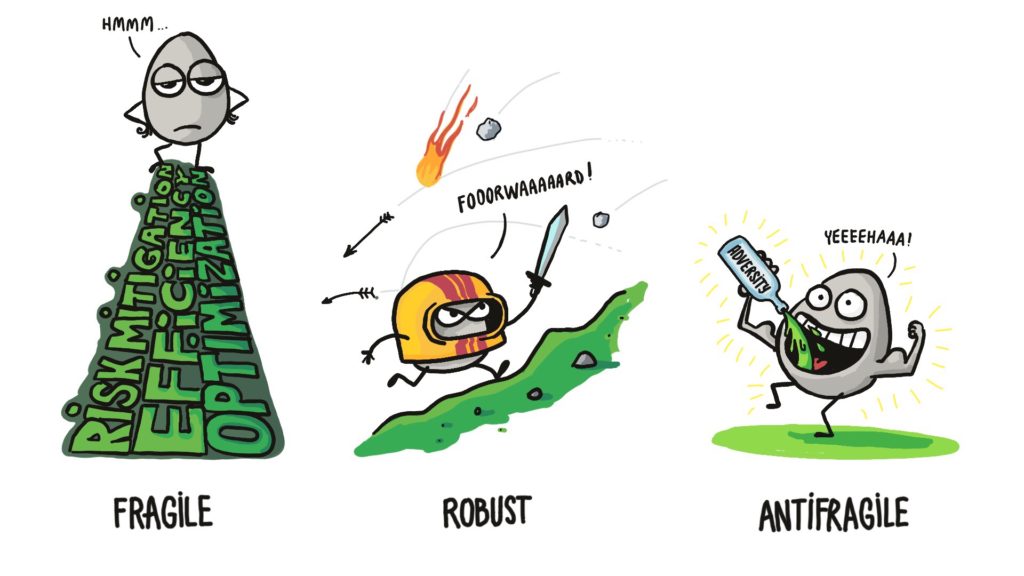
As a result, we shifted our focus from creating companies to creating entrepreneurs. To that end, we developed programs for individuals we called the “ready-to-go entrepreneurs.” These are students who are determined to create their own standalone startups. As much as it pains me to say it, back then we were in fact creating people whom others might perceive to be like the characters in the television show “Silicon Valley”—except ours had a moral compass and were better at startup success!
In other words, we believed this group represented our own “beachhead market,” the term entrepreneurs use to describe the one market segment that has proven most open to their products or services. We believed the purpose of teaching entrepreneurship was to train students to build startups.
A funny thing happened, however, as we started to succeed in this strategy. Students who didn’t identify as ready-to-go entrepreneurs—our primary market, remember—would tell us our programs and content helped them as well. People who were interested in building entrepreneurial ecosystems in government, academia, or the private sector began taking our courses. These participants didn’t intend to create startups, but, rather, to be active “entrepreneurship amplifiers”—the term we coined for members of this group. These amplifiers intended to support and promote entrepreneurial behaviors by building ecosystems of individuals and organizations that foster the creation of more startups in a region.
Interestingly, we next discovered that what students learned in our entrepreneurial programs was valuable even outside the startup arena. For example, one of my graduate students, a professional pianist turned e-commerce entrepreneur, told me that she reconnected with her joy of music by applying entrepreneurial principles to the planning and marketing of a campus piano concert. The reason? By first developing a targeted clientele profile, she found that organizing the logistics and content of the event was a much clearer and more manageable task. Her anxiety level before the concert went down and her satisfaction level afterward increased. For the first time, she said, she felt in charge of the process and better aligned with the concert’s mission.
It was a revelation for me that the principles of startup success could be applied in such a radically different domain.
Indeed, my understanding of entrepreneurship has evolved. Now, I view it as a mindset (spirit), a skill set (knowledge and capability taught via an apprenticeship approach), and an operating model that people can apply to achieve their goals. It’s a model that our students can apply in any community-based setting where they are utilizing resources that are not under their control.
Put more simply, my goal as an entrepreneurship educator is no longer to create entrepreneurs or grow startups. My goal now is to create antifragile humans and teams.
What does “antifragile” mean, exactly? It’s a term I first heard used by professor and author Nassim Nicholas Taleb, who wrote a book titled Antifragile: Things That Gain from Disorder. When applying his systems analysis to humans, I would describe antifragile people as those who “grow when exposed to volatility, randomness, disorder, and stressors and love adventure, risk, and uncertainty.”
Fragile systems, meanwhile, are people or teams that break when exposed to unexpected events. Ironically, I believe much of the study of management has been about optimizing and de-risking—it has been about making very predictable systems, teams, and individuals. Paradoxically, that approach ultimately creates a world with more fragility in it.
A key insight I took away from Taleb’s book is that antifragile people and teams are not simply those who are “robust” or “resilient.” Robust people and teams are those who “weather the storms” and keep marching straight ahead unaffected. In the practice of management, we often believe that being robust is the desired state for business leaders, but in actuality it is a neutral condition. Robust people and teams maintain their course when faced with adversity or unexpected events. But in our current world, maintaining course is not enough.
We should be promoting antifragility as the desired state in management endeavors. Antifragile systems, people, and teams actually grow stronger in the face of adversity and uncertainty.
We often believe that being robust is the desired state for business leaders, but in actuality it is a neutral condition.
I draw this analogy: We are unlikely to remember the athlete who’s great early in the game when everything is going as planned, but whose performance fades as time goes on and the competition becomes more complicated. But we never forget the player who is a good performer at the start of the game, but then turns into a great player as the game gets more chaotic and the stakes get higher. It’s that player who is the antifragile human being—it’s that player who accomplishes great things.
Speaking at MIT this past spring, GE Chief Innovation Officer Sue Siegel said, “The world will never be as slow as it is today.” She is so right. Neither will it ever be as simple or predictable. The future will be filled with more Brexits, Donald Trumps, technological disruptions, business model disruptions, societal disruptions, and all of the resulting adversities, uncertainties, and unpredictability. The future also will be filled with opportunities for people to come up with new creative solutions.
To deal with future challenges, we will need people who don’t just survive in a chaotic, stressful, and complex world, but thrive. This is why, as management educators, we must make entrepreneurship about much more than startups. An antifragile entrepreneurial mindset is not just a “nice-to-have” skill we can teach to some of our students. It is a “must-have” skill we should be teaching to all of our students. Their future—and ours—depends on it.
The author
Bill Aulet
A longtime successful entrepreneur, Bill is the Managing Director of the Martin Trust Center for MIT Entrepreneurship and Professor of the Practice at the MIT Sloan School of Management. He is changing the way entrepreneurship is understood, taught, and practiced around the world.

The books
This methodology with 24 steps and 15 tactics was created at MIT to help you translate your technology or idea into innovative new products. The books were designed for first-time and repeat entrepreneurs so that they can build great ventures.

What Exactly is Disciplined Entrepreneurship in Three Sentences?
Recently, a colleague from Stanford sent me a link to an article that he had run across in the Silicon Republic. Now I must admit, that is not a publication I usually read but I was happy when I saw MIT EDP alum Mary Rodgers smiling picture at the top of the article. Mary is an entrepreneurship amplifier in Galway’s (Ireland) Portershed. The title of the article was “Founders need to articulate and sell the value of change to customers” which was nice but I really wanted to hear what else Mary had to say based on the enthusiasm of this professor from Stanford. I was not let down.
The article starts out with a nice introduction of what Mary is doing and what she has accomplished and then it is a series of 11 questions, all good. As I read through them, I found myself positively shaking my head and agreeing which the answers does not happen for most articles on entrepreneurship – at least not all of the responses. But when I got to the sixth question, “What resources and tools are an absolute must for your arsenal?” – her answer got me up out of my seat to cheer. It is probably the most succinct descriptions I have read, heard or seen of what DE is all about. Let me give you her exact quote:
“There is no one answer – the disciplined entrepreneurship process combines multiple publications such as lean business models, ‘crossing the chasm’ and others, to create a cohesive actionable disciplined process. I use these learnings every day to stress-test a solution or to help a company to problem-solve. Following the 24 steps of disciplined entrepreneurship will accelerate success and failure, and takes the subjective out of the equation.”
Mary Rodgers
I love this definition and I can’t tell you how great it was to hear it coming from someone else’s mouth. It made my day. I can also see why the Stanford professor liked it as well. It is inclusive but also rigorous and relevant. Foreshadowing building off this, in another article in the near future, I am looking forward to addressing why I am now so convinced that this DE process really works. We have now accumulated enough data to draw this conclusion with high confidence.
Here is a link to the article in its entirety: https://www.siliconrepublic.com/start-ups/portershed-mary-rodgers-startup-advice. Now just because I really loved almost every word of the article, you know I will quibble with something… and I will. The last question asked is “What’s the number-one piece of advice you have for entrepreneurs?” and Mary’s answer is “Be resilient.” I would have said “Be antifragile” but that is for another article/blog post which will be coming very soon too.
Thanks, Mary for all you do for entrepreneurs and summarizing the concept so well. We can all learn from each other!
The author
Bill Aulet
A longtime successful entrepreneur, Bill is the Managing Director of the Martin Trust Center for MIT Entrepreneurship and Professor of the Practice at the MIT Sloan School of Management. He is changing the way entrepreneurship is understood, taught, and practiced around the world.

The Disciplined Entrepreneurship Toolbox
Stay ahead by using the 24 steps together with your team, mentors, and investors.
The books
This methodology with 24 steps and 15 tactics was created at MIT to help you translate your technology or idea into innovative new products. The books were designed for first-time and repeat entrepreneurs so that they can build great ventures.

Five Key Factors to Foster Entrepreneurship in Ecuador
Entrepreneurship is vital not just for economic growth and prosperity, but also for social harmony. It creates jobs and gives peoples’ lives more purpose and meaning. The solutions for many of society’s most intractable problems come not from governments or established companies, but from new companies that unleash the creativity and energy of the human race.
Today, we need entrepreneurship more than ever to help mitigate problems related to climate, energy, healthcare, education, and unemployment. Innovation-driven entrepreneurship should be a top priority that will help Ecuador on all fronts.
As Ecuador seeks to build a vibrant entrepreneurial ecosystem, it is critical to keep the following factors in mind.
- Keep the Main Thing the Main Thing: The single necessary and sufficient condition for an entrepreneurial ecosystem is entrepreneurs. That is the goal. Success means more, higher quality, and connected entrepreneurs. By high quality, I mean entrepreneurs who have built or are building scalable ventures that sell products beyond the local market. They create exports. Keep the focus on this goal and put entrepreneurs at the center of all efforts.
- Create Your Own Model: A common mistake is trying to replicate Silicon Valley in other places. There is only one Silicon Valley and it is customized to the specific assets of that region. Other areas have different assets and should not try to compete, but rather to create their own unique ecosystem. Vibrant entrepreneurship hubs have been created in London (FinTech), Boulder, Colorado (lifestyle), and Pittsburgh (food). Ecuador should understand and leverage its special assets to create something new.
- Global Perspective: Scalable new companies must have an international capability, so they must be aware of international markets. Ecuador is not a big enough market to create large businesses on its own. Understanding these markets and making connections to enter it is essential.
- Entrepreneurship Education and Training: Entrepreneurship is a craft that can be taught. Ecuadorian universities and schools are starting to invest and build their capabilities to provide this curriculum. This education should be complemented with external training and experience. Awareness of current best practices worldwide is not a “nice to have,” but rather is an essential tool to scale the new businesses. Fernando Moncayo Castillo was a successful businessman in Ecuador, but it was the training he received at MIT that enabled him to reach the next level to scale Inspectorio into a global power.
- Think Long Term: Ecosystems are systems, which means that they are complicated with many different first-order and second-order effects. Any action that is taken will almost certainly have time delays between the time they are implemented and when positive results are realized. It is crucial that a long-term perspective is taken in implementing a systematic solution for it to be sustainable. Impatient entrepreneurial ecosystem builders who think linearly and only appreciate quick wins might feel good in the short term, but find they are not building long-term sustainable benefits. They may even be making the situation worse than before.
Having been an entrepreneur, taught entrepreneurship, and worked with leaders globally to foster entrepreneurship, I’ve seen first-hand the importance of these steps. They are all critical factors in building an innovative-driven entrepreneurial ecosystem in Ecuador.
Bill Aulet is the managing director of the Martin Trust Center for MIT Entrepreneurship at MIT and a professor of practice at the MIT Sloan School of Management. He is the author of Disciplined Entrepreneurship: 24 Steps to a Successful Startup and the Disciplined Entrepreneurship Workbook.
The author
Bill Aulet
A longtime successful entrepreneur, Bill is the Managing Director of the Martin Trust Center for MIT Entrepreneurship and Professor of the Practice at the MIT Sloan School of Management. He is changing the way entrepreneurship is understood, taught, and practiced around the world.

The Disciplined Entrepreneurship Toolbox
Stay ahead by using the 24 steps together with your team, mentors, and investors.
The books
This methodology with 24 steps and 15 tactics was created at MIT to help you translate your technology or idea into innovative new products. The books were designed for first-time and repeat entrepreneurs so that they can build great ventures.

Toughest Challenge For an Entrepreneur
This past week, I had a reminder of the toughest and maybe most critical challenge a founder has to face. A very composed founder had worked incredibly hard over the summer to get their new startup off the ground and they were succeeding. They had real customers and they had real investor interest. Things looked great but they weren’t. As so many startups have, the executive team was not working well together. All the people involved were good people, very talented and extremely committed but it was clear after three months that despite everyone’s best efforts, there was still a lot of friction. It would have been easy to ignore the situation but we drill into the heads of our founders “good enough never is if you want to build a great company.”
The founding CEO admirably stepped up to the situation and had the difficult conversation to say they would not be going forward together. He was very logical about it and it all made sense but he was an absolute wreck emotionally and just needed someone he could talk to about the situation. He was taking it very hard. Still, he did the right thing and I encourage more founding CEOs to do this as well and let me explain why.
- No Villians: All the people involved are good people but that does not mean it is right to go forward together. Doing a startup is like getting married to your partners – and there is more than one of them so it is really complicated. If they have a bad day it affects you directly and vice versa. You can’t settle when it comes to your partners. If you split up, it does not mean someone has to be a villain, it is just you don’t get married to everyone you like.
- Energy Amplifiers: When you look at your teammates in a startup, they should be energy amplifiers. This means that they should give you energy when you work with them and not take energy away. It is either one or the other. It is not possible that they do not affect you, and vice versa. You know if they are energy accretive or not (overall) and don’t delude yourself that it is neutral.
- Cutting Corners Now Assures You Are Destined for Mediocrity: If you cut corners at the beginning of your core team, it is assured that it will only get worse as future people decisions are made and this assure you that your organization is destined for mediocrity. Make clear that the objective is to continually raise the bar and not lower it as you hire future team members. Great people will sense this either way and make their decision accordingly and as a result, you will not get them and it will get worse and worse.
- The Climb Only Gets Steeper: Rather than have the difficult conversation, founders often believe things will get better. That is delusional. The climb will only get steeper as you go forward and the lack of teamwork will only become more obvious and damaging. Deal with it now and even though it hurts, things will be better in the future.
- Best for Both Sides: The person that you are thinking of parting ways with is a real person too who is talented and driven. If it is clear that their path forward is clouded and they are unlikely to have a clear leadership role going forward, then it is your duty to them to make it clear to them so they can pursue better career opportunities. I have let people go many times who are very good but just not a good fit for my organization. While it is never fun in the short term, afterward I help them and cheer them on in their new organizations and take great pleasure in seeing them do better in another circumstance than they would have in our company. You are in fact helping them by stepping up and making clear there are better options elsewhere.
- There Are More Stakeholders As Well: You have to also look at the bigger picture and realize that this situation is going to affect others to whom you have a responsibility. There is the rest of the team and also, probably most importantly, the customer. Why I say the customer is probably the most important, let me give you a sports example. If a professional sports team never lets a player go because they don’t want to have the difficult conversation, that sports team will clearly eventually become an inferior team. This will result in fewer fans who are willing to pay to see the team play until ultimately there is no team. You must put the best team on the court for your customers or you will cease to exist in time and they you do nobody any good.
- Think of Your Team as a Product That Should Have Newer and Newer Versions: When a startup gets going, they naturally talk about their product as needing continual upgrading. You start with your Minimal Viable Business Product (MVBP) and then add features to create version 1, version 2, version 3. You need to think about this with regard to your team as well. Think of how you are going to continually upgrade your team. Some times that means redesigning a module, rewriting some code or removing a feature completely. The same is true of a team which is a more important determinant of success than the product.
- Entrepreneurship Success Pie – #1 Indicator of Success Is Team: From an earlier article about the most overrated thing in entrepreneurship (the original idea), Marius and I developed the following illustration that has been made into a sticker and I have seen on many slides (which makes me very happy):
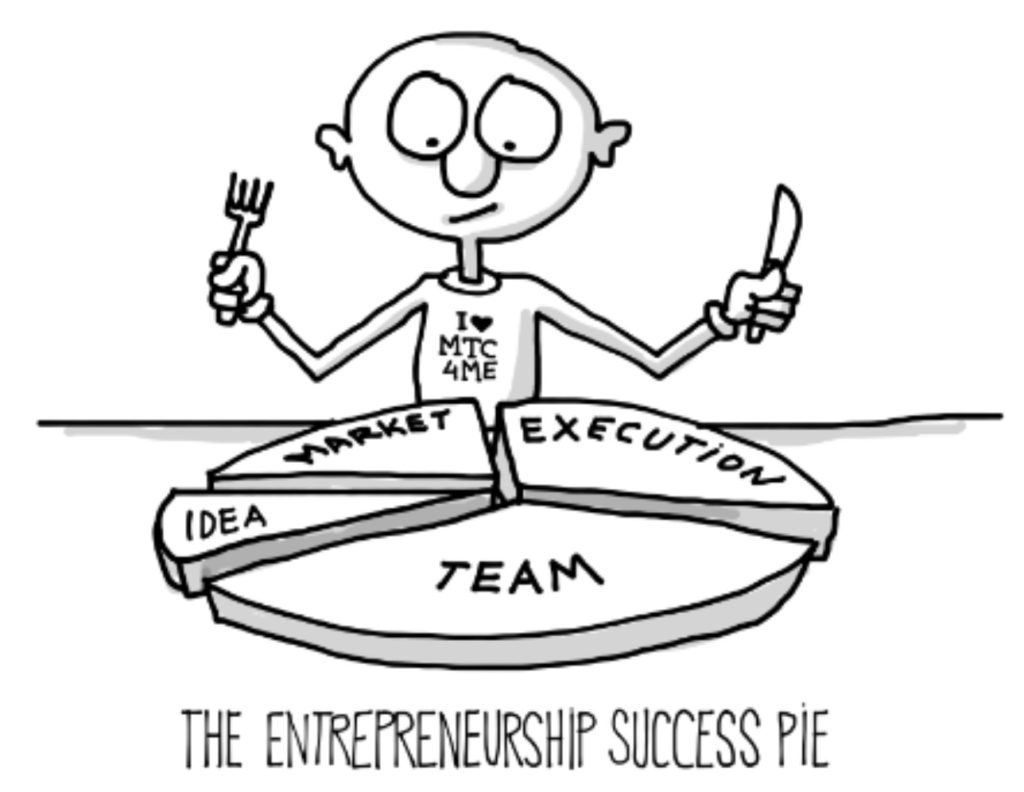
This visual says it very well. The team is the most important ultimate component of a new ventures success so it deserves your focus, energy and commitment. Have the hard conversation and don’t settle. Good enough never is when you want to build a great company. Get the best possible team – which means the best cohesive, motivated and effective unit resulting from a singular common vision, shared core values, and complementary skills – to optimize your chances of success. That starts with you making hard choices and having difficult conversations for your core team.
You set the example!
The author
Bill Aulet
A longtime successful entrepreneur, Bill is the Managing Director of the Martin Trust Center for MIT Entrepreneurship and Professor of the Practice at the MIT Sloan School of Management. He is changing the way entrepreneurship is understood, taught, and practiced around the world.

The Disciplined Entrepreneurship Toolbox
Stay ahead by using the 24 steps together with your team, mentors, and investors.
The books
This methodology with 24 steps and 15 tactics was created at MIT to help you translate your technology or idea into innovative new products. The books were designed for first-time and repeat entrepreneurs so that they can build great ventures.

The Lambo and Volvo Story Helps an Entrepreneur Become More Successful: Recoil Kneepads
You never know what in a day will make your day a great one. Recently, I had on my calendar a meeting with Vicky Hamilton from Scotland Can Do Scale Summer School. It is always fun to see Scottish entrepreneurs, especially after this program because they really treasure the workshop and then go out and work hard to put the concepts to work.
Vicky was in Boston as part of a US state department program at the moment called the Young Transatlantic Innovation Leaders Initiative (YTILI). If you know me well, you know I have a deep skepticism of government programs with fancy names like this. But heck, Vicky was great and she was a Strathclyde and Scale alumnus so I was looking forward to seeing her but to be honest, my expectations were not high. It was going to be a better meeting than I anticipated.
When the meeting with Vicky started, she told me how much better her business was doing now since Scale. “How specifically?” I asked. What followed is a great case study that I will use in future classes and workshops because it is so easy to understand and is so compelling.
To make a long story short, her business was now growing much faster and much more profitably since she started showing more discipline about who her customer was. Her business is a simple product, kneepads with springs in them so that when you have to kneel down on the ground, not only you are less likely to get hurt but you also are much more productive. Here are illustrations of the product.
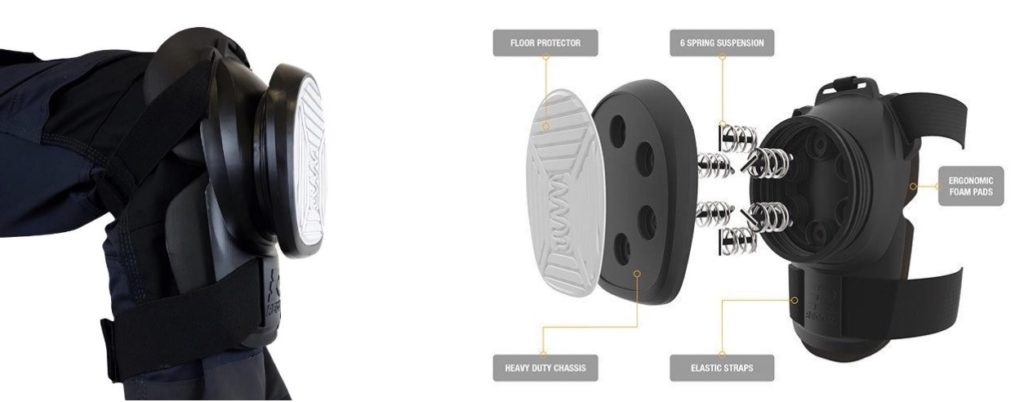 Recoil Kneepads – www.recoilkneepads.com
Recoil Kneepads – www.recoilkneepads.com
It is an unsophisticated product with a seemingly straightforward value proposition. Vicky had launched the company out of a project at Strathclyde University (great entrepreneurship program there) and was immediately getting sales. What more did she need to learn? People were buying her product on Amazon.
What did the Disciplined Entrepreneurship approach do to help? She had been selling to whoever would buy them. The kneepads cost in the neighborhood of $85 for one pair. As mentioned above, one initially favored channel was Amazon because they could sell directly. This could also be Kickstarter or other crowdfunding/sales sites for new products which I always caution people on. They might be good but understand first the risks. To understand that, you have to know well who your customer is.
What happened with Recoil Kneepad? They got a lot of DIY (i.e., Do It Yourself) customers who might get the product to work on a project on the weekend where they bought their other supplies at a place like Home Depot.
For this customer, the hundred dollar price point was a high one and if they only worked on an occasional project for a few hours on a weekend they would not get as strong a value proposition as a professional tradesperson (e.g., carpenter, tiler, plumber, etc.). A professional tradesperson could get tens of hours in a week of use out of the product. The tradesperson also has more concrete benefits to doing this because they were in a competitive business where things came down to dollars and cents much more so than a DIY customer.
So the willingness and satisfaction of the professional tradesperson was much higher. The DIY customer was Vicky’s Volvo in the Lamborghini and Volvo story I tell to start off my workshops and courses. It was a distraction and you much focus on one beachhead market at the beginning. Vicky bought into this and then started to test it to see if it made sense in the real world beyond the classroom lectures.
Low and behold, the DIY customer put more pressure for a discount and also wrote terrible reviews on Amazon. Terrible reviews are incredibly damaging to a business as Professor Sinan Aral of MIT Sloan has shown in his research. The discounting of pricing also directly and dramatically decreased profit margins.
Another interesting take away that Vicky got from the Scale Summer School and her work at Strathclyde was to watch the cost of customer acquisition (CoCA – Step 19 in the 24 Steps). She saw that if she focused on the tradespeople market, she could drive her CoCA down five times rather than if she staid generic.
So in summary, when she focused on tradespeople and did not pursue nor accept the DIY customers, she saw her LTV go up (because of less discounting), her CoCA go down, her customer NPS (Net Promoter Score – a standard way to measure customer satisfaction) go up and her joy in the business went up as well.
This was a very simple and easy to understand product. It shows clearly and specifically why it is a sound business decision to put your focus on a specific market segment (in this case tradespeople) and turn away the metaphorical Volvo (the distracting DIY) market.
Sometimes those great moments in the day come when you don’t expect and having this great case study fall on my lap was one of them. Thanks so much for sharing, Vicky!
The author
Bill Aulet
A longtime successful entrepreneur, Bill is the Managing Director of the Martin Trust Center for MIT Entrepreneurship and Professor of the Practice at the MIT Sloan School of Management. He is changing the way entrepreneurship is understood, taught, and practiced around the world.

The Disciplined Entrepreneurship Toolbox
Stay ahead by using the 24 steps together with your team, mentors, and investors.
The books
This methodology with 24 steps and 15 tactics was created at MIT to help you translate your technology or idea into innovative new products. The books were designed for first-time and repeat entrepreneurs so that they can build great ventures.

Ethics & Entrepreneurship
Theranos. The now-defunct company creates a visceral reaction with people when you say its name. Try it. Its story has been detailed in the book Bad Blood: Secrets and Lies in a Silicon Valley Startup by Wall Street Journalist John Carreyrou, as well as the HBO documentary movie The Inventor: Out for Blood in Silicon Valley. I would hope none of my students would ever do such a thing, but how do I know?
Reading the book made me feel very comfortable that they would not – at least without some terribly distorted justification. It was simply fraud pure and simple. The technology never worked and it was terribly misrepresented to others that it did. It was the Enron of Silicon Valley.
The movie, however, presents a much more nuanced and scary picture of how to create a distorted mind that could justify what was done. The Theranos “true believers” could say that they had such a noble “raison d’être” (a French term meaning “reason for existence”) that is could justify short-circuiting basic values in the short term. Didn’t Steve Jobs often use the principle of “fake it until you make it”? Thomas Edison did this as well with the light bulb.
While we always teach that a new venture/endeavor should have an inspiring and unifying “raison d’être,” this must be pursued within the boundaries of acceptable values of honesty and integrity.
Often I see Steve Jobs (or Elon Musk, Mark Zuckerberg or others) worshiping as being used entirely incorrectly and without thoughtful justification. While successful, these people are a data set of one (“n=1” as we like to say at MIT). How do you know that is the factor that made them succeed? You don’t for sure when n=1. There are so many different factors at play to disentangle them and figure out which ones were positive and which were negative is practically impossible with a larger data set and certain not with a data set of one.
I remember a coach once told me “sometimes you succeed because of yourself and your habits and sometimes in spite of them.” Great to keep in mind.
Don’t get me wrong. I am impressed with Jobs, Musk, Zuckerberg, Bezos, and others have accomplished but that does not mean everything they have done, do and will do is gospel. I strongly object to the deification of these people and using their behavior to justify bad behavior elsewhere. Everyone has their own style. Each person has strengths and weaknesses. Decode carefully and chose the strengths but avoid the weaknesses.
My opinion is as follows. I have written and spoken about the incredible importance of culture. I have written about the primary importance of teams. These two are intertwined. On team and in a healthy culture, you need to have trust. For trust, there must be honesty and integrity.
For one example, the best salesperson you can ever have is your customer. How can a customer really love you in a sustainable way if they don’t trust you? Underlying ethics in entrepreneurship are not optional, they are the foundation and the guard rails to success.
I give tremendous credit to my friend and colleague at Stanford, Tom Byers, for taking this issue head-on. He has been banging the drum on this topic for a while now and he is not done. His fabulous OpEd piece frames the issues well and begins the dialogue in a productive manner, but we are just at the beginning. We look forward to welcoming Tom to MIT this year to discuss this and move the dialogue forward to accelerate the discussion of this crucial topic especially related to entrepreneurship education.
The mission of MIT is to promote the development of knowledge related to science, engineering, and technology for the betterment of the world. There can be no justification in that mission for fraud. Sometimes it really is black and white.
The author
Bill Aulet
A longtime successful entrepreneur, Bill is the Managing Director of the Martin Trust Center for MIT Entrepreneurship and Professor of the Practice at the MIT Sloan School of Management. He is changing the way entrepreneurship is understood, taught, and practiced around the world.

The Disciplined Entrepreneurship Toolbox
Stay ahead by using the 24 steps together with your team, mentors, and investors.
The books
This methodology with 24 steps and 15 tactics was created at MIT to help you translate your technology or idea into innovative new products. The books were designed for first-time and repeat entrepreneurs so that they can build great ventures.

In Loving Memory of Marty Trust
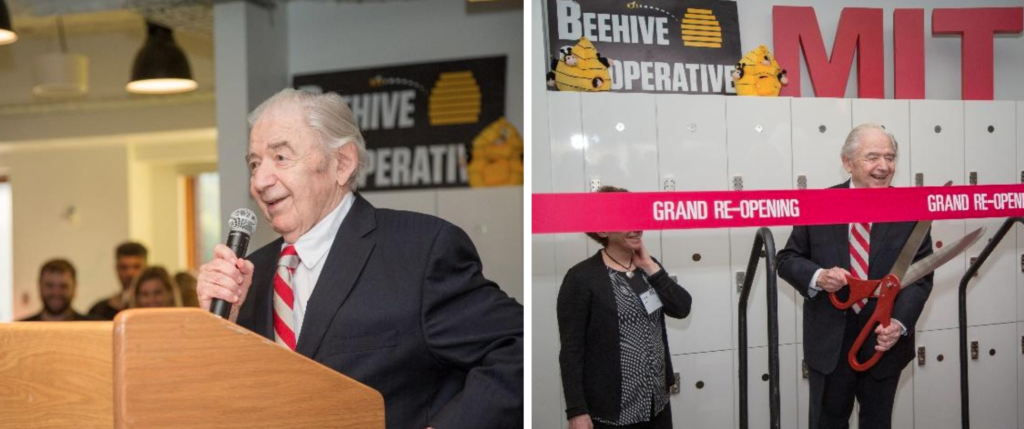
On September 12, 2019, Martin Trust passed away peacefully in Brookline, Massachusetts. While not a surprise, this was still sad in so many ways, but, as he would wish, there was a positive side to this news. In the big picture, you could not ask for any more from 85 years of life than what Marty Trust got out of it and what he gave back in the process.
He was born into very humble beginnings in the New York borough of Brooklyn and earned a spot in the extremely prestigious Cooper Union for the Advancement of Science and Art. The fact that Cooper Union was free was an extremely important (i.e., essential) element of why Marty could attend. This provided the on-ramp for what would become an extraordinary life of advancement and contribution to society.
After Cooper Union, he was accepted into the MIT Sloan School of Management, but having similar financial constraints, he had to find jobs to pay for his tuition. Fortunately one job was becoming a Teaching Assistant where one of his students was Edward Roberts, who became a friend and later a renowned professor at MIT Sloan and with whom he would have a life long relationship.
Marty graduated in 1958 and launched his business career in the apparel industry. At first, he worked for others who valued his understanding of technical issues, but as he learned the business, Marty became a strong generalist with particular expertise in overseas production. Seeing more and more opportunities he eventually launched his own business in 1970 with the humblest of beginnings. When he secured commitments for a large order of clothing but had no facilities to build it, Marty would not be denied and he and his wife, Dena, set about filling enough of the order in their small apartment in Massachusetts so they could get the first payment and bootstrap the business. This incredible start led to the establishment of what became a global power, Mast Industries.
Just a year later, Mast got another break when they received their first order from the Limited Stores, which was led by the visionary and charismatic Les Wexner. Marty and Les hit it off well; this friendship and business partnership would turn out to change the apparel business forever. Les revolutionized the retail experience, but, as astute industry experts would note, his secret weapon was Mast Industries and Marty Trust.
Mast equally if not even more so revolutionized the production of clothing. The new concepts of building a capability in “speed sourcing” and “supply chain” by fostering strategic partnerships in all parts of the world long before “globalization” was initiated proved to be game changers. Now new fashion trends were not only spotted quickly, but could be delivered upon at a speed and price point that were unheard of and at which others could not compete.
In 1978, The Limited Brands officially acquired Mast Industries making the business marriage complete and they have dominated the apparel industry ever since. That is the business side of Marty Trust, but there is so much more.
The thing I remember when meeting Marty for the first time, which might seem strange but is somehow very fitting, was how incredibly soft his hands were. When you met him and shook hands, they were the softest you have ever felt. While shaking your hand, Marty is smiling and looking you in the eyes and saying something in his soft voice that is very kind. He makes you feel great, special, and his equal. He was as welcoming, personal, and authentic as anyone I have ever met, and yet he is a legend for the business he built. You will not get a warmer greeting in your life and yet there was also a sparkle in his eye that was special.
When I meet people who knew Marty and mentioned his name, they would immediately give me the same warm smile that he had when he would greet you the first time. The staff at our center all adored him as you can see from the picture below.
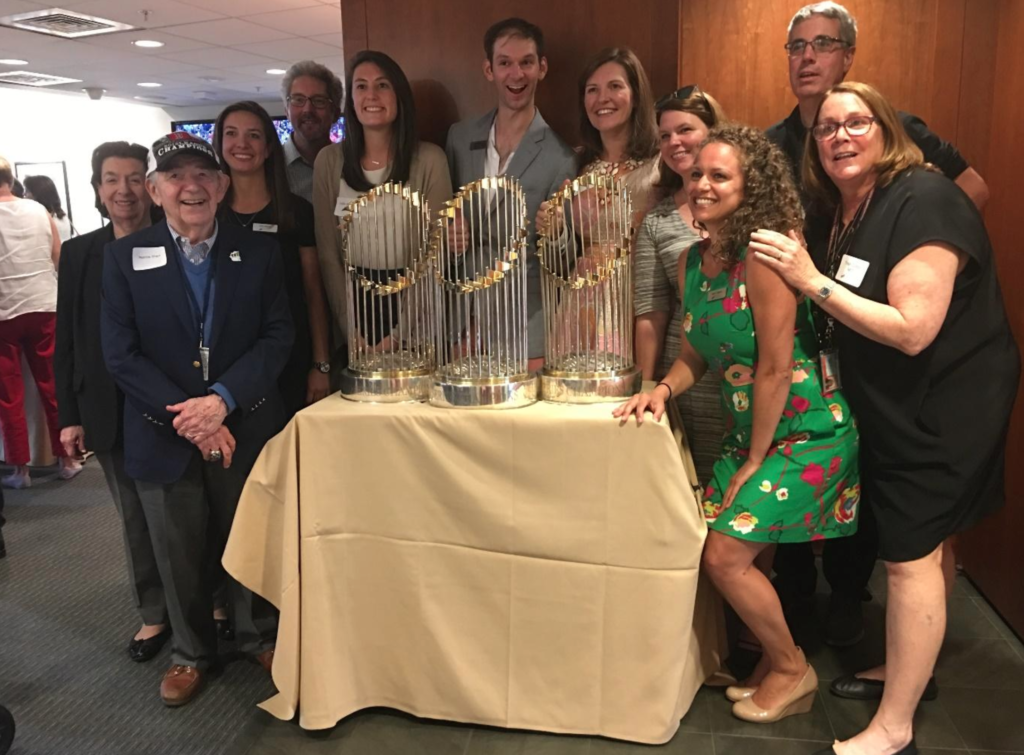
We have such fond memories of his visits to the center when the staff would get so excited to provide him with the latest pins, t-shirts, or coffee cups with the Trust Center logo on it (more on the logo later). Students would swarm around Marty to take selfies with him and he would smile for each one like it was his first time being asked. I remember David Lucchino, who knew Marty from his being part of the Red Sox ownership group, calling him “Marty, Marty, The one man party.” The staff loved that name and it stuck for many years at our center.
I mentioned our logo and this remembrance would not be complete without the story of the development of its design. Many years later it has not just stood the test of time, but it is recognized around the world. At the time when we created it, this was the first time I got to really work with Marty. Honestly, it was a painful process that took months because Marty insisted we get every detail correct. There were back and forth conference calls week after week when most human beings would have said “enough!” While I was never in business with Marty, this experience with the logo gave me a sense of why he was so successful. His attention to detail (he never forgot a number) and his stamina to keep pushing until it was perfect was beyond extraordinary. It makes sense. If you are going to ship products to millions of people, every detail matters, and he could not only turn that focus on, but he could keep it on for weeks.
As you might have guessed from the picture with the staff above, all our meetings were not only at the Trust Center. Once a year, Marty would invite the staff to the owners’ box at Fenway Park for a game. It was an annual tradition that our overworked people looked forward to the entire year. Often unexpected guests would drop by, like Pedro Martinez on his recognition night and Curt Schilling another year, but the undisputed most fun guest for us was Marty. He was both such a warm host and a mischievous sort that fit in so well with our team and we all loved him. Here he is with his world championship ring in another one of our favorite pictures. 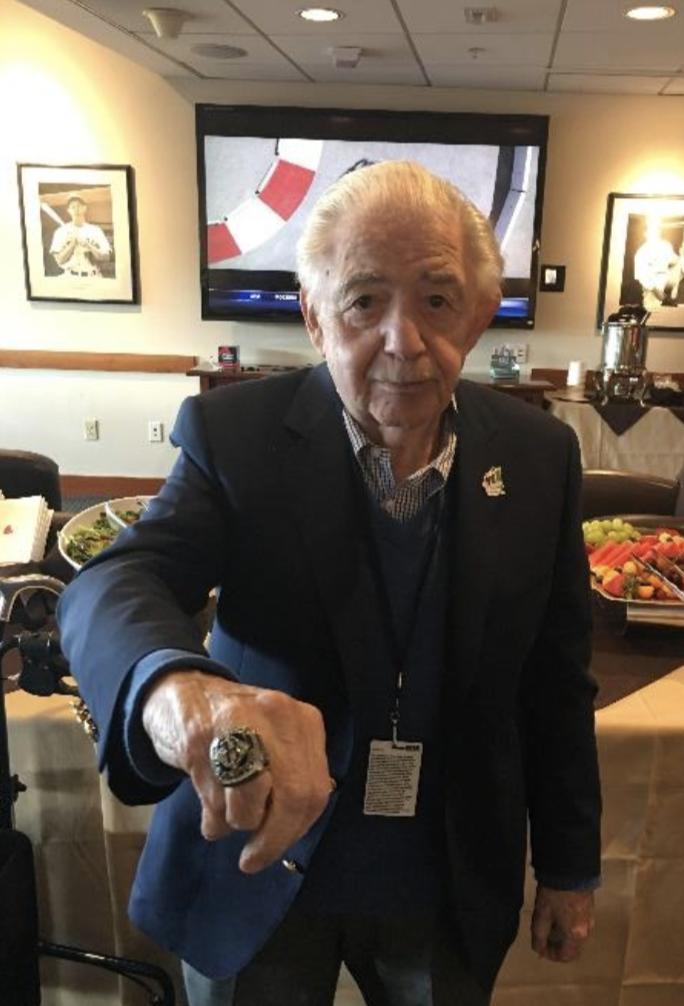
I have already violated the axiom that “less is more” and I best not go on indefinitely about Marty so let me try to wrap up about someone who had so many dimensions that it is impossible to capture in a short tribute.
He believed in entrepreneurship and he did something about it. He believed that we could change the field 10 years ago if we built a center to advance the rigorous teaching of entrepreneurship and then he stood by us. Today the Martin Trust Center for MIT Entrepreneurship has unequivocally made giant strides and it is only just the beginning of what will be a generational journey to bring the field of entrepreneurship education to the next level.
Marty was both patient and impatient in this process. While he always supported us, he also pushed us to increase our velocity and also our ambition. We would not have been able to get started without his generous gift, and we would not have been able to reach the heights we have today without his continued support. Marty has given us the foundation and initial momentum for the center to carry on his work. We are all so proud that what we do changes the lives of thousands of students every year. This is the part of Marty Trust’s legacy that we have been honored to be part of, but there is still so much more.
Marty has been a steadfast supporter, a mentor, a jokester, and most of all a friend to me personally the past 10 years to an extent that I could never have imagined when I started this job. I will miss him beyond words.
I am sure Marty is most proud that he leaves as a legacy his wonderful family, including his magnificent partner and wife of almost 60 years, Dena. His incredibly dedicated and loving daughter, Laura, and her husband Alan are stewards to carry on the good work Marty started and grow it further. His son, David, and three grandchildren are the additional pride and joys of his life that he so treasured as well.
Marty has always seemed so happy to me, but the last time I was with him in his owners’ box at the Red Sox game with one of his grandsons, he was radiant as he said of the grandson (it could have been any of them), “That boy is going to do great things.”
The same will forever be said about you, Marty, in the past and present tense. You have done great things that will live on and continue to positively affect lives. You did not cheat this world and serve as an inspiration for what we can be when we are at our best. RIP our great, great friend Marty Trust.
The author
Bill Aulet
A longtime successful entrepreneur, Bill is the Managing Director of the Martin Trust Center for MIT Entrepreneurship and Professor of the Practice at the MIT Sloan School of Management. He is changing the way entrepreneurship is understood, taught, and practiced around the world.

The Disciplined Entrepreneurship Toolbox
Stay ahead by using the 24 steps together with your team, mentors, and investors.
The books
This methodology with 24 steps and 15 tactics was created at MIT to help you translate your technology or idea into innovative new products. The books were designed for first-time and repeat entrepreneurs so that they can build great ventures.

MIT delta v 2019 (Full Livestream)
Every year at this time, I get this extreme exhilaration as well as a big knot in my stomach. Why? delta v Demo Day.
delta v is our capstone program at MIT for the best of the best student entrepreneurs, the most committed, the ones that made the most progress during the school year. We take a subset of them, about 100 participants, at MIT and in NYC at our Startup Studio and push them to the max to help they achieve “escape velocity”. We give them space, stipends (in exchange for their commitment to work full time), structure and status. (For a fuller description of the program go here.)
We throw all our resources at them to make them the best entrepreneurs they can be … and it is VERY intense for three months. At the end of that time period, for their graduation, if they achieve sufficient progress, they are invited to present to the MIT student body in the largest auditorium on campus to great fanfare. In addition to the full auditorium and overflow crowd getting the proceedings beamed in next door (over 1,500 people in total on-site), there is an equal number watching via live stream, this year from 10 different countries. It is an amazing production effort which has hundreds of different failure points. When done right, it is magnificent, but there it is an entrepreneurial endeavor so there are lots of new things and it could clearly go very visibly wrong if one thing were to go wrong.
Still, every year, the team led by Trust Center Executive Director Trish Cotter and Tommy Long (head of operations) blows people’s minds with how well it goes. This year, there were 24 teams in the program, 17 at MIT and 7 in NYC, and 23 made it to the finish line which is an outstanding accomplishment. Building a new company is a very intense experience and you need a team with strong relationships and commitments. Just like in real life, such stress can break relationships and teams which is very normal and does not reflect poorly on anyone. In fact, it means they are being honest.
After last year’s extraordinary delta v 2018 Demo Day, we were so proud but we immediately had to worry about how we could meet the new standard we had set. That is the knot in my stomach. An uncomfortable challenge is actually a good thing and that is what we had. This was no “gimme” or easy task in front of us. I am proud to report that not only did Trish and her team meet the challenge, they exceeded the challenge! The teams’ presentations were amazing and the logistics were flawless. The students were inspired so we now have our next cohort starting and the logistics were flawless.
You don’t have to take my word for it, you can see it for yourself and see what the best of the best of MIT student entrepreneurship looks like in this full uncut livestream:
Once cut, the team videos will be available (probably by Sept 10 th ) directly here.
To say I am proud and excited by what the Trust Center team pulled off and how the student teams performed would be an understatement. The levels of dopamine in my blood from this event are at unsafe levels. I feel like Chris Farley in this video.: Still, I have a knot in my stomach as well about how we are going to top this next year.
Oh well, we need to get back to work on that for next year, starting now…
The author
Bill Aulet
A longtime successful entrepreneur, Bill is the Managing Director of the Martin Trust Center for MIT Entrepreneurship and Professor of the Practice at the MIT Sloan School of Management. He is changing the way entrepreneurship is understood, taught, and practiced around the world.

The Disciplined Entrepreneurship Toolbox
Stay ahead by using the 24 steps together with your team, mentors, and investors.
The books
This methodology with 24 steps and 15 tactics was created at MIT to help you translate your technology or idea into innovative new products. The books were designed for first-time and repeat entrepreneurs so that they can build great ventures.


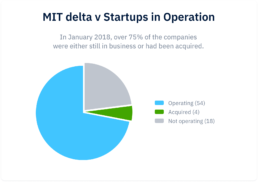
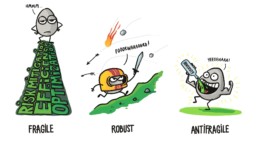
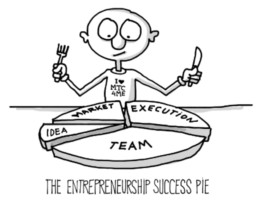
 Image courtesy of Adam Gordon
Image courtesy of Adam Gordon